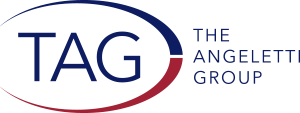Metrics That Mean Something: Establishing an Intentional and Effective Major Gifts Program
As major and mega-gifts continue to rise as a percentage of total giving, there is a growing need to depend on metrics-driven major gift programs. The age-old “90/10 rule” rings true now more than ever – and all signs point to further confirmation of this adage. Over 91% of high net worth individuals give to charity (source US Trust); that group accounts for over 50% of all charitable dollars (Curtis Group). In higher education, “mega-gifts” above $10 million are soaring while the middle of the pyramid lags (source: Inside Philanthropy).
The Art of Fundraising Meets the Science of Metrics
Strong, personal relationships combined with carefully crafted metrics and strategies make for a powerful fundraising duo. To reach this harmony, you must think strategically to build your major gift plan with the same intentionality you bring to bear in your other endeavors, such as managing the details of a fundraising gala or the assiduous steps to build a coordinated, multi-channel direct response program.
Similarly, a successful metrics-driven moves management program is a process with distinct steps, milestones and goals, often personalized based on the experience and the tenure of the individual staff members.
Here’s how an effective fundraising team can build the metrics-driven program that will support your important relationship building work:
- Get everyone on board. A team-wide commitment to major gifts is required of the development staff, board, organizational leadership, and volunteers who engage and solicit prospects.
- Develop the moves management plan as a crucial component of your organization’s broader strategic plan – and engage leadership in doing so.
- Hold monthly prospect moves management meetings with gift officers and/or key volunteers that include the introduction of new prospects and updates on current progress. These meetings should gradually encompass more formal processes such as one-on-one portfolio review meetings, quarterly “Top 25” strategy sessions, quarterly 90-day inactive prospect reviews, and annual portfolio rebalancing.
- Create an intentional, strategic set of metrics for your major gift officers, using the annual numbers below as a general guide based on your donor profile while tweaking based on each officer’s skills and experience. At this stage, intentionality becomes critical! These goals can’t take a back seat.
- Maintain a portfolio of 150 prospects.
- Complete 120 “moves” (substantive, strategic interactions with donors/prospects that move them from one step to another – for example from qualification to cultivation) annually.
- Ensure your planned solicitations total 2.5 times more dollar goal.
- Close 18 major gifts per year
- Identify 25 new prospects each year


